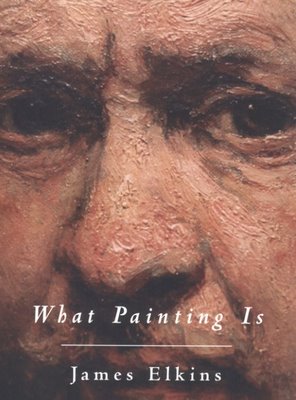Richter's Squeegee, Courbet's Knife, Rosetsu's Fingers

Gerhard Richter
"Breath"
(detail)
oil on canvas 1989
Milwaukee Art Museum
Tyler Green's recent piece on the correspondence between Courbet's paint quality and Gerhard Richter's paint technique, echoes my own recent thoughts. The landscape motifs in many of the works at the recent Courbet exhibition at the Getty in Los Angeles were almost a framework to enable Courbet's paint pyrotechnics.

Gustave Courbet
"The Gust of Wind"
(detail)
oil on canvas c. 1865
The Museum of Fine Arts, Houston
Courbet's paint is dragged, scumbled, rubbed, scraped, ladled on with a palette knife, smeared with rags, and fingers. Richter's work is also manipulated on the surface of the canvas while the paint is still wet. Richter's blurred, squeegeed marks create a new reality and for me evoke thoughts of grottoes, mists and Wagnerian myths.

Gerhard Richter
"Breath"
oil on canvas 1989
Milwaukee Art Museum

Nagasawa Rosetsu
"Herdboy Playing a Flute"
141.8 cm x 139 cm hanging scroll; ink on paper c. 1792
Kyushoin Temple, Kyoto
Nagasawa Rosetsu (1754-1799), a Japanese artist featured at the Asian Art Museum in San Francisco in - "Traditions Unbound: Groundbreaking Painters of Eighteenth-Century Kyoto" also actively manipulated the wet paint surface to create images of great depth and mystery. Nagasawa Rosetsu's "Herdboy Playing a Flute" was painted with his fingers, palms and fingernails. The artists of Eighteenth-Century Kyoto referred to this simple yet extraordinary technique as shitoga. Paintings in this expressive manner were often created during a night of poetry and drink. Another painting executed by Rosetsu with his fingers is signed, "suichu mansha Rosetsu shi ga" - (finger painting, haphazardly painted by Rosetsu when drunk).

Artists often use their fingers and hands while painting- smearing, blending and stippling the surface of the work. There is a sensual quality to the application of paint that is often ignored in writing about art. As a painter I find James Elkin's "What Painting Is" to be an important work because of its discussion of the physicality of paint.: the loopy, thick, gooey quality of lead white. The clear mineral glazes of lapis lazuli. The mystery of cinnabar, flying white and dragon's blood. For James Elkins, painting is akin to alchemy.

Leonardo da Vinci
"Ginevra de' Benci"
(detail of fingerprint)
c. 1474/1478, oil on panel, National Gallery of Art
Leonardo da Vinci's "Ginevra de' Benci" may not lead us to the heirs of Jesus and Mary Magdalene but it does provide evidence of Leonardo's own hands blending the wet paint into a rich field of sfumato. Painters are often like alchemists, as James Elkins describes, or like masons building a thick surface like Courbet's rocky fields, and at times seem to be like Pygmalion creating living pictorial realities out of their own hands.



Comments